Porcupine Winter Dens – Photos and Videos
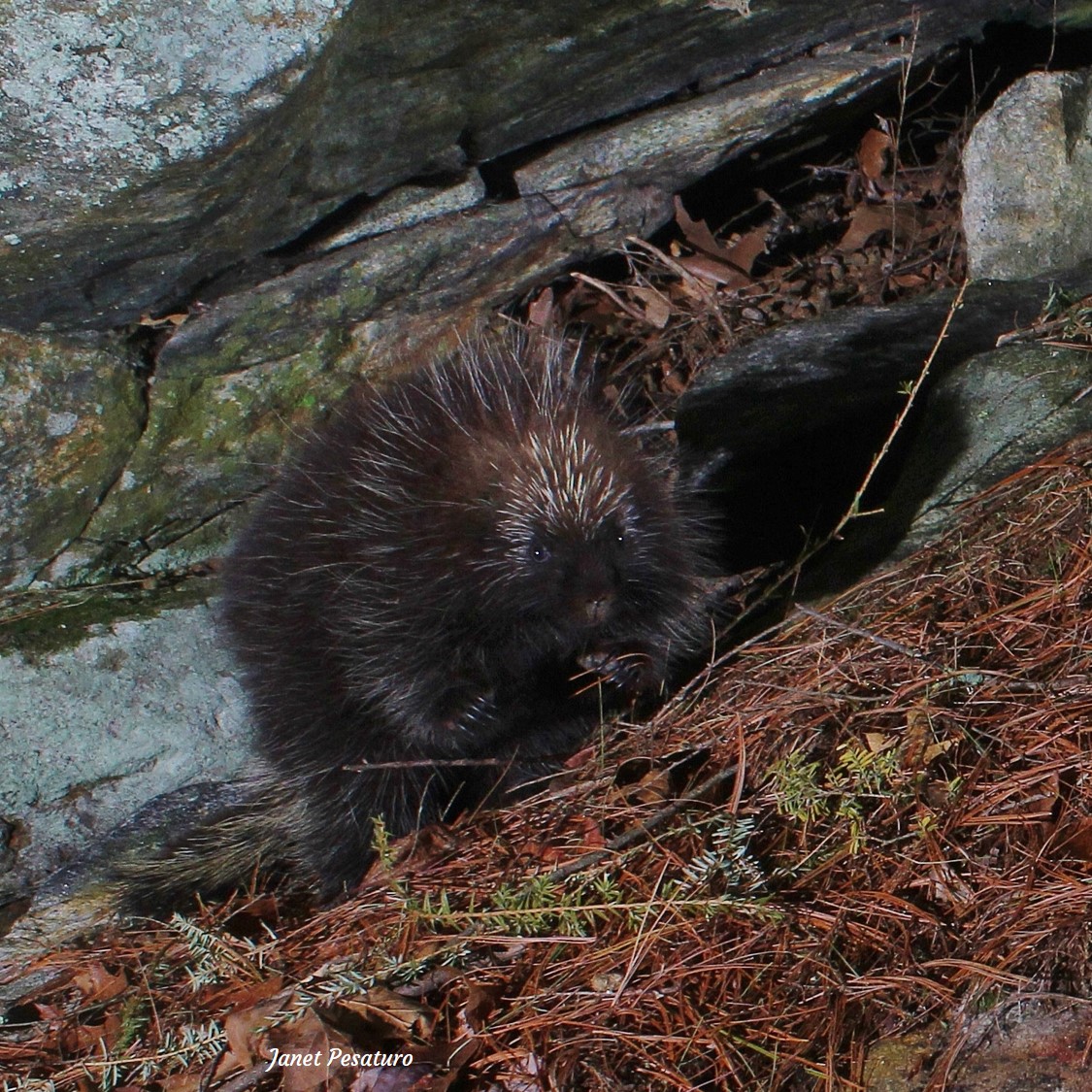
At least in the northern portion of its range, the North American porcupine (Erethizon dorsatum) uses dens in winter for protection from wind and weather. They choose spots near good feeding trees, but they are flexible in terms of den type. Rock crevices, hollow logs, abandoned beaver bank lodges, space under upturned trees and space under outbuildings are all examples I have seen. These dens make interesting trail camera targets for studying porcupine behavior as well as for capturing visits by porcupine predators and by other animals which might also want to use the den. They are usually easy to identify, for reasons described below. This post will include how to identify porcupine winter dens, photos of several dens I have found, and videos of interesting behaviors at a couple of different dens.
Identifying Porcupine Winter Dens
Porcupine dens are often conspicuous because porcupine scat accumulates at the entry, so the key to finding one of these dens is to learn to recognize the scat. Like many herbivores, these prickly rodents void pellets. They are usually curved and elongated, measuring about 1 inch long and 3/8 inch wide. They have been likened to cashew nuts in size and shape, but often in a pile there will be some that are nearly straight, and some that are small and oval, kind of like deer pellets.
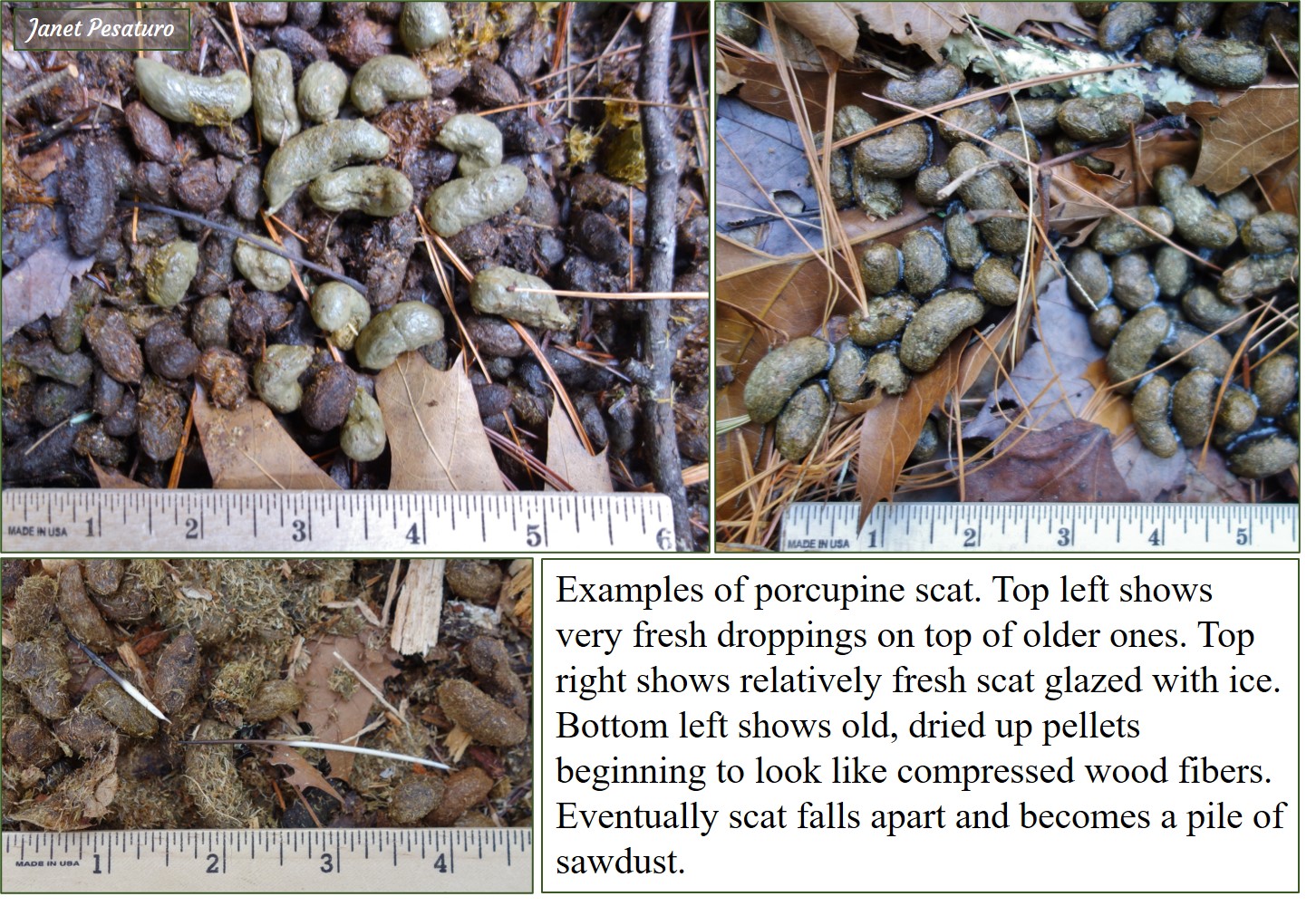
Apparently porcupines push the droppings out the doorway as they accumulate, creating piles just outside the den, which you will see in the photos below. Station your camera in late fall or winter after you have found evidence of fresh scat. You can certainly set a camera on one with only old scat, but the chances of capturing porcupine activity are greater with evidence of recent occupancy.
Examples
Dens among rocks
In Massachusetts where I spend a lot of time tracking, most porcupine winter dens are associated with rocks: They are under rock overhangs, in cracks, and between boulders, especially if these resources are in close proximity to hemlock trees, a favorite winter food source. My experience is similar to that of porcupine expert Uldis Roze, who found that 70% of porcupine dens in the Catskill Mountains were in rock outcrops. Check out the following examples of Massachusetts porcupine dens.
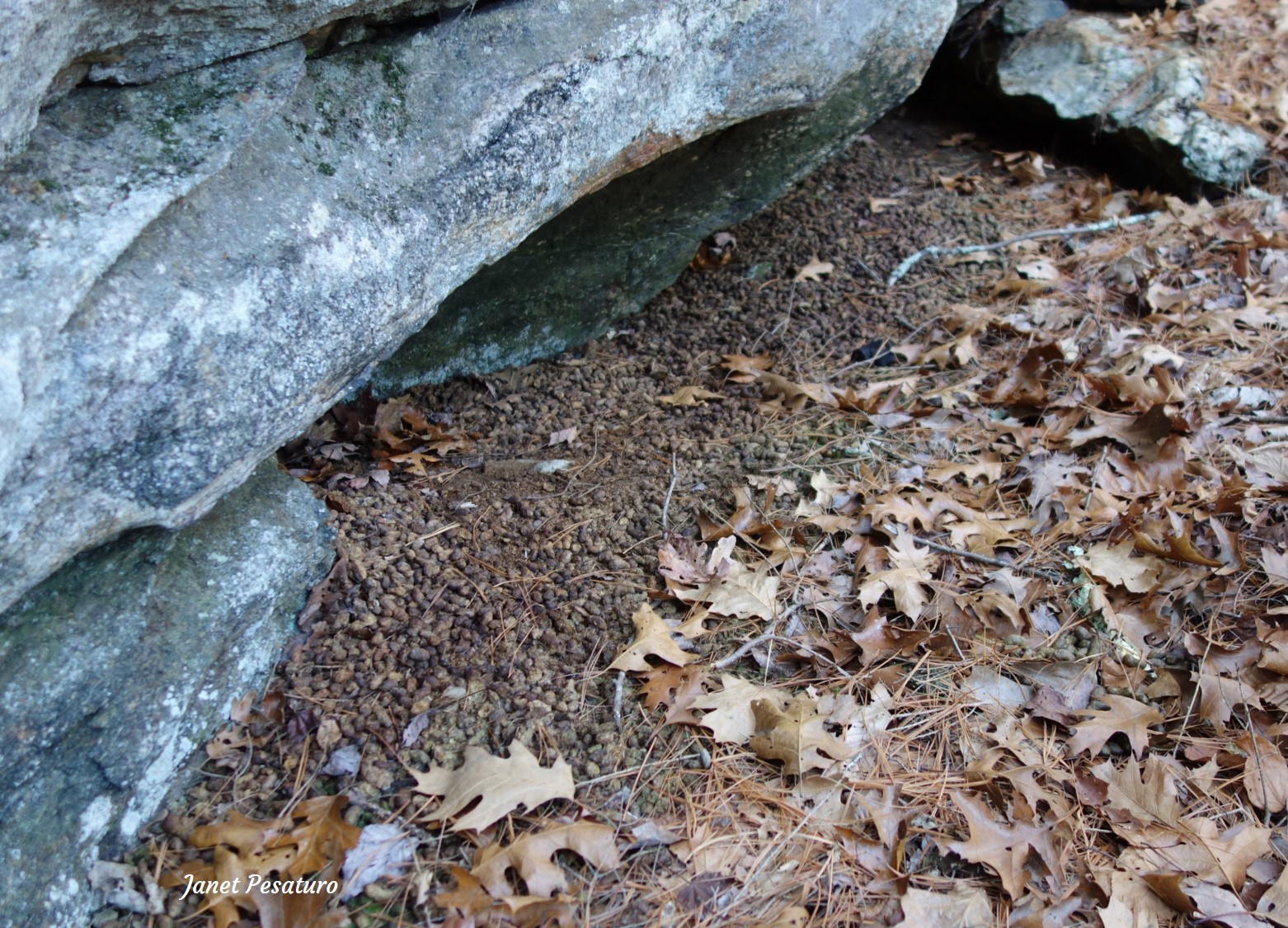
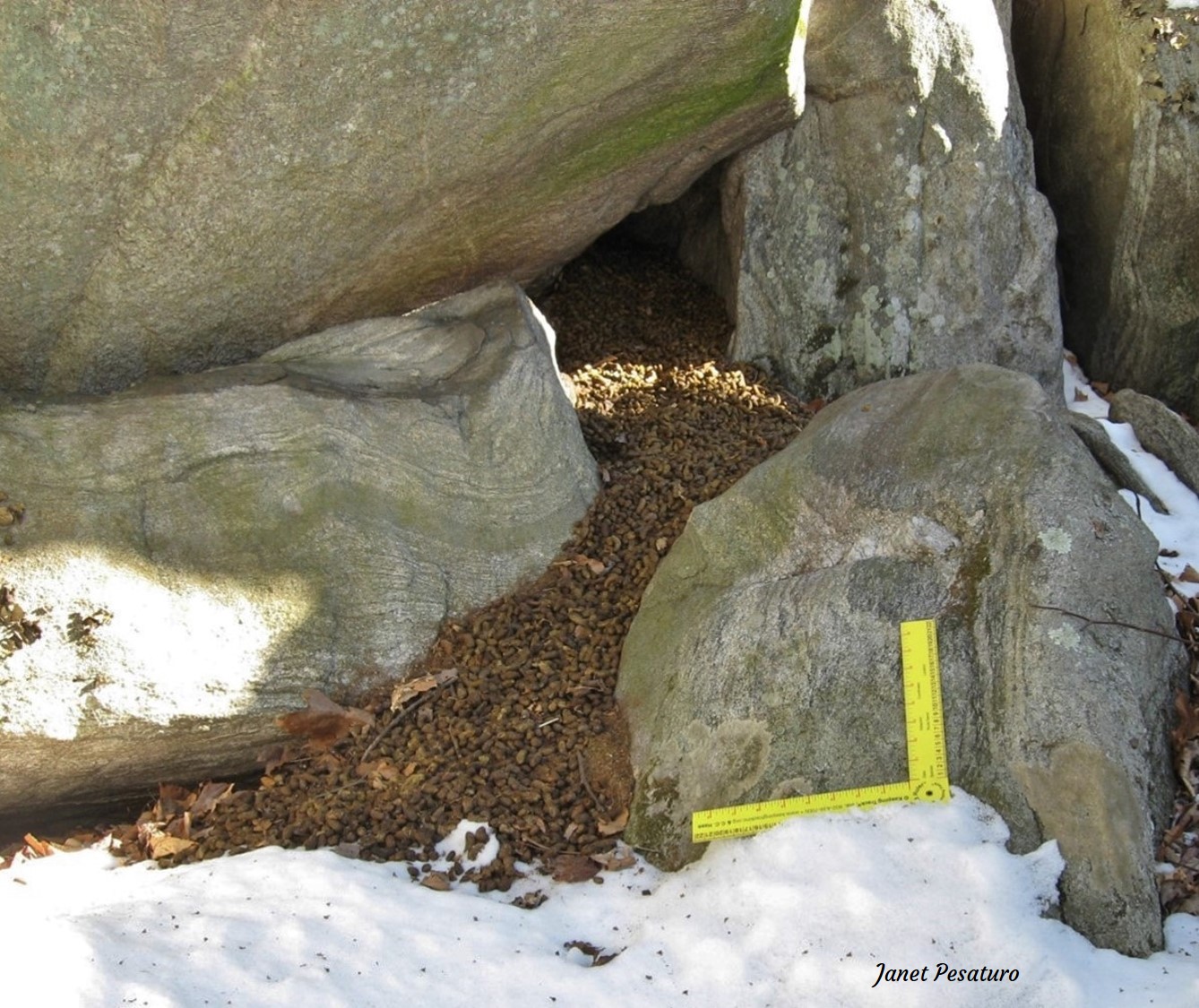
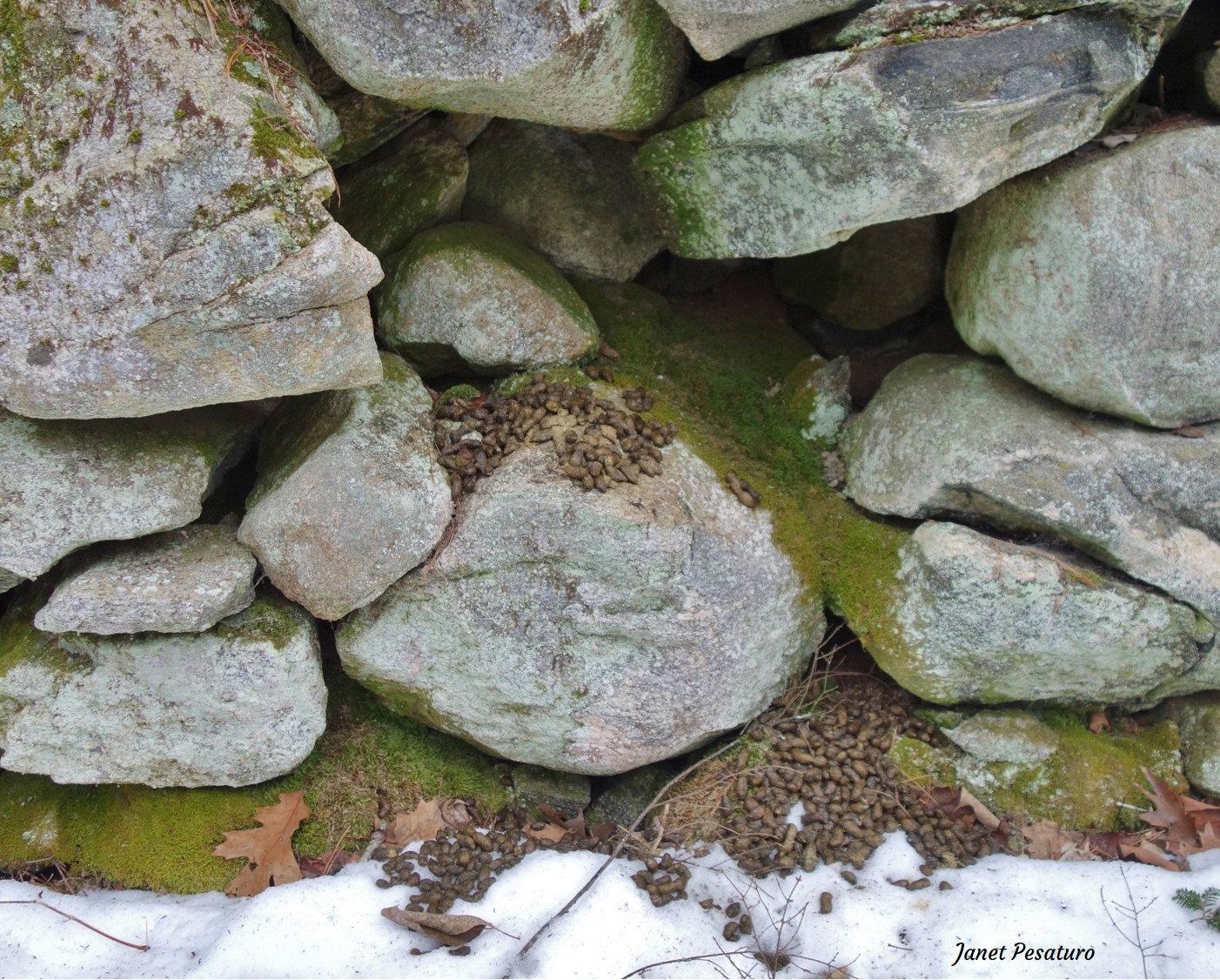
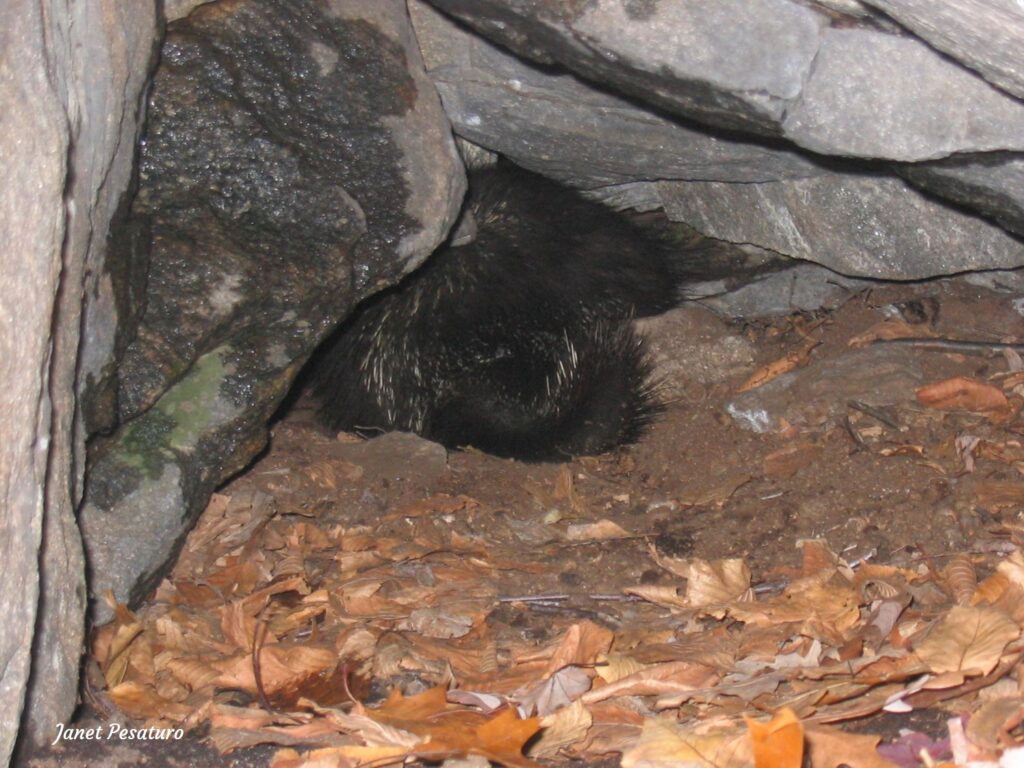
Dens in tree cavities
Another den type is the tree cavity. Porcupines will den in a cavity of a tree trunk, from ground level to at least 10 feet above ground. They probably den higher than that, as long as the cavity is large enough. The next photo shows one in a hollow at the base of a large tree. To see one in a tree cavity about 10 feet above ground level, scroll down to the Videos.
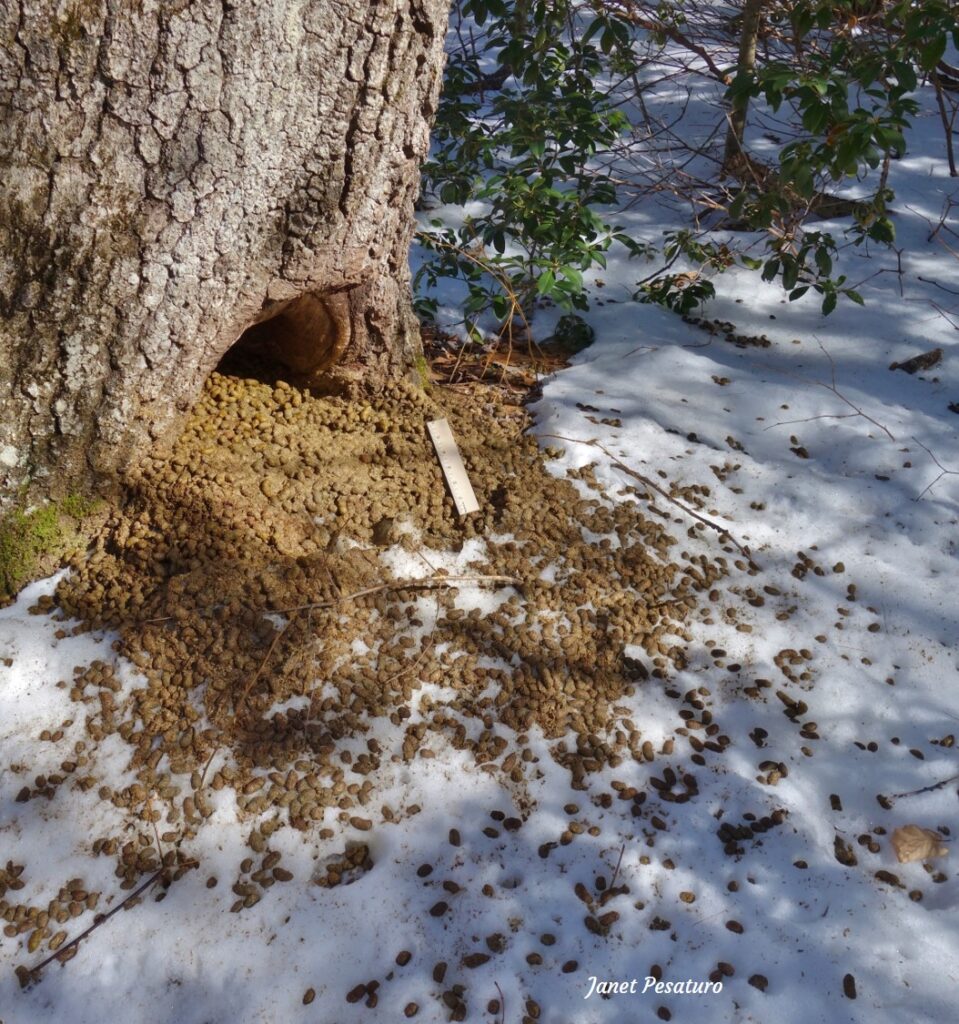
Dens in old beaver lodges
I have seen the occasional porcupine den in old beaver bank lodges but it probably doesn’t have to be a bank lodge. They’d probably use an old pond lodge after the pond drains.
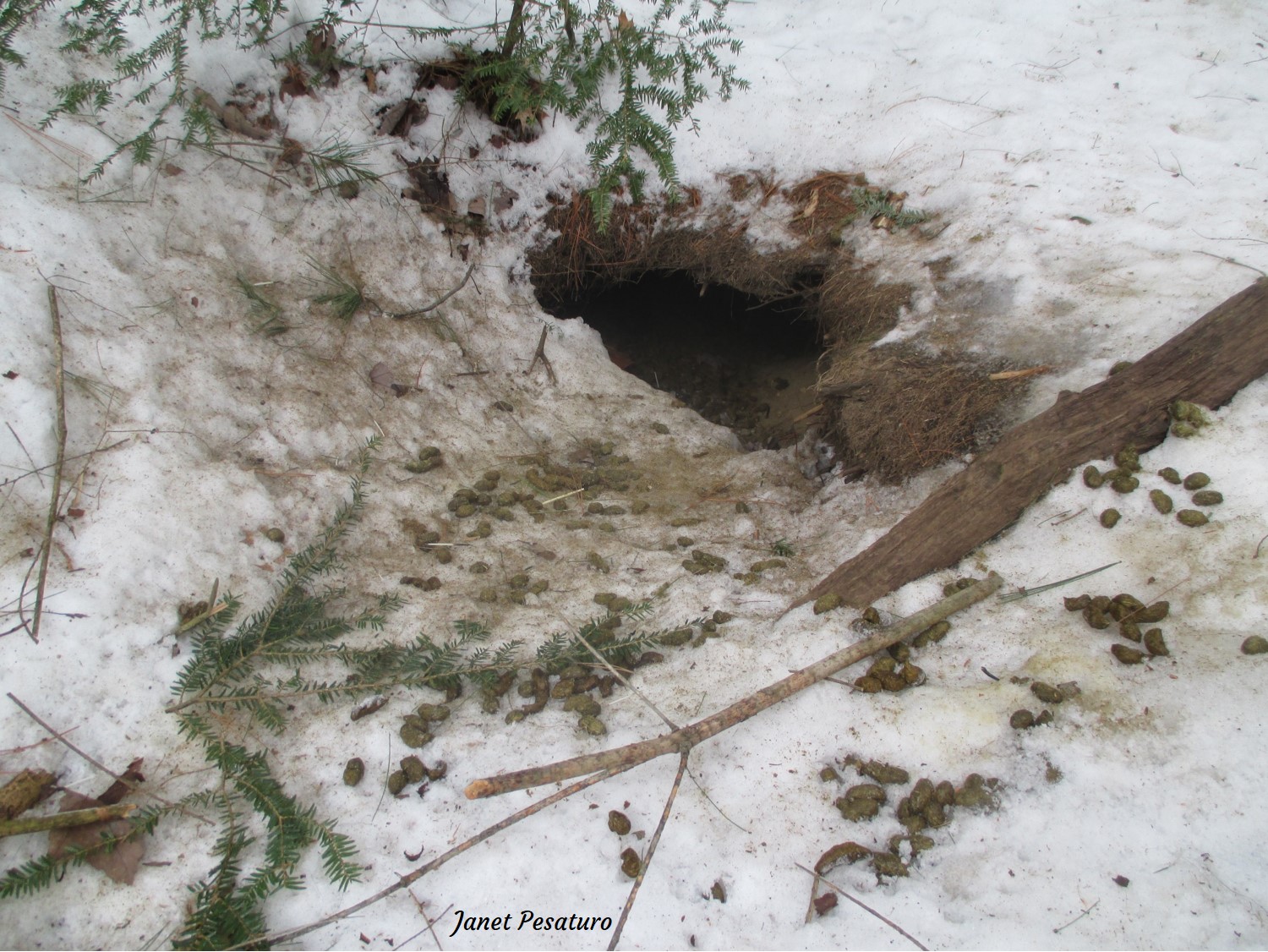
Trail Camera Videos at Porcupine Winter Dens
This video of the action at a porcupine den in a tree cavity about 10 feet above ground level, reveals so much interesting behavior. Turn the volume up and listen to the noisy competition for the cavity. Notice the porcupine’s surprisingly clumsy butt-first descent, in comparison to the raccoon’s and the squirrel’s rather graceful head-first descent. Watch the tail action as the porcupine comes down – it appears to be used to help find the way, as well as for stability.
The next video features more noisy squawking, as one animal approaches an occupied den. With my cameras I am finding that competition for a den is fairly common. Roze has found that each individual typically uses a given den for a few weeks, then finds another. My videos suggest that “finders keepers” is the rule. Perhaps they would use the same den all winter if it was always available. Roze also says that they occasionally share winter dens, though often begrudgingly.
Finally, here’s one featuring a fisher, the most effective porcupine predator, nosing around a den. Notice also the nervousness of the porcupine who emerges from the den 6 hours later.
Bobcats and raccoons also show up at porcupine dens fairly frequently, particularly those among rocks. It appears that both species scent mark under rock overhangs and along rock faces, and both species also use rock crevices for shelter. This post features a video of a raccoon and a bobcat at a porcupine den: Raccoon Scent Marking and Comparison with Bobcat.

Love it!! Now my challenge is how to find these on the Colorado prairie. I keep seeing porcupine poop all the time but never a big accumulation. There are burrows and holes in the soft mudstone. We have had cameras there but nobody frequents these holes enough. I will keep looking. Thank you so much.
Hm, I am wondering if the weather is milder there? They may not need winter shelters so much if it doesn’t get very cold. And in desert habitats, they may use shelters in summer for protection from the heat, but not in winter.
Awesome video!!!! Am still looking to get a trail cam, don’t want a cellular one, just a simple to use one, take the card out and look on computer.
Any suggestions would be helpful.
Thanks,
Becky
Hi Becky, for ease of use, image quality, and general reliability, I like the moderately priced Browning Recon Force Advantage (red glow IR flash) and the Browning Spec Ops Advantage (no-glow invisible IR flash). They cost a little under $200. User interface is about as intuitive as it gets, so I rank these as the easiest to use.
hi
I have some questions to anyone who knows anything about porcupine behavior.
i have at least two porcupines living in a stone drainage pipe that runs under the road to collect rainwater. Both entrances are not very far into the woods and there is a lot of human activity. I have often seen them throughout the winter and even a bit in the summer but only one at a time and they always run into the tube when they notice me. Yesterday however i saw them together in the entrance to their den and even though i was 6 feet away they stayed there only occasionally grunting or showing their backside. I came and went every 2 minutes and the same behavior occurred. The one closer to me is slightly large and always laying at its side so i was wondering if she is pregnant and is too weak to go deep into the den. Another possible reason is that the other one was blocking the way, but why didn’t it move. My last reasoning is that it’s because whenever im near the den i talk in a calming voice. And i did that again. I talked directly to them and walked calmly and upright because i learned that if you act stealthy like a predator they’ll act like prey. I think it worked but im just wondering will mated porcupines share a winter den? I though because of her large belly and exhausted behavior maybe she is pregnant. or maybe the one deeper in is and that one is protecting her!? Another question i have for you is will they reuse winter dens or inhabit visit them throughout the summer. The summer before this i did always see them near the tube and sometimes in it. The pile of scat however did come later into the fall.
Porcupines usually do not run from predators, including people, especially when at a den where all they have to do to prevent predation is to protect their face by turning towards the den, and showing you their back and tail. If they’re up in a tree, they mostly ignore you, if they’re down on the ground in an open area where there’s no way to protect their head, they may hurry away, show you the tail, or spin around. But if there is something against which they can hide their face, they simply do that and display the dangerous tail. You don’t need to be speaking calmly or anything like that to elicit such behavior; they just do it. I have seen many porcupines, most at their dens, but also in trees and sometimes on the ground in an open area. I guess when you are well armored with sharp quills, you don’t need to flee in response to a predator.
I don’t know if pregnancy would make a female lay on her side. There may be something wrong with that one.
I don’t know if any humans fully understand what’s going on when 2 porcupines seem to be using the same winter den. I have read it’s usually a male and a female. They may have mated in the past, but at a winter den, it’s not really a “mated pair” because their breeding season is in the fall and the male, as far as we know, is not involved in the child rearing. Maybe they just tolerate each other because they know each other.
I have gotten many video clips of 2 porcs at one winter den, and it almost always appears like competition for the den, rather than cohabitation. One goes in or is already in, and does not allow the other to enter. What you are seeing is consistent with what I have seen.
Yes, they most certainly reuse winter dens in successive winters. That is why you can find huge scat accumulations at choice dens. They might well use winter dens in summer, especially during cold or rainy weather, and if the den is close to good summer foods. In mild summer weather, they usually rest in the open on tree branches. If a porcupine is injured and can no longer climb well, perhaps it will use a den even in mild weather.
Pingback:Porcupines – On Wildlife